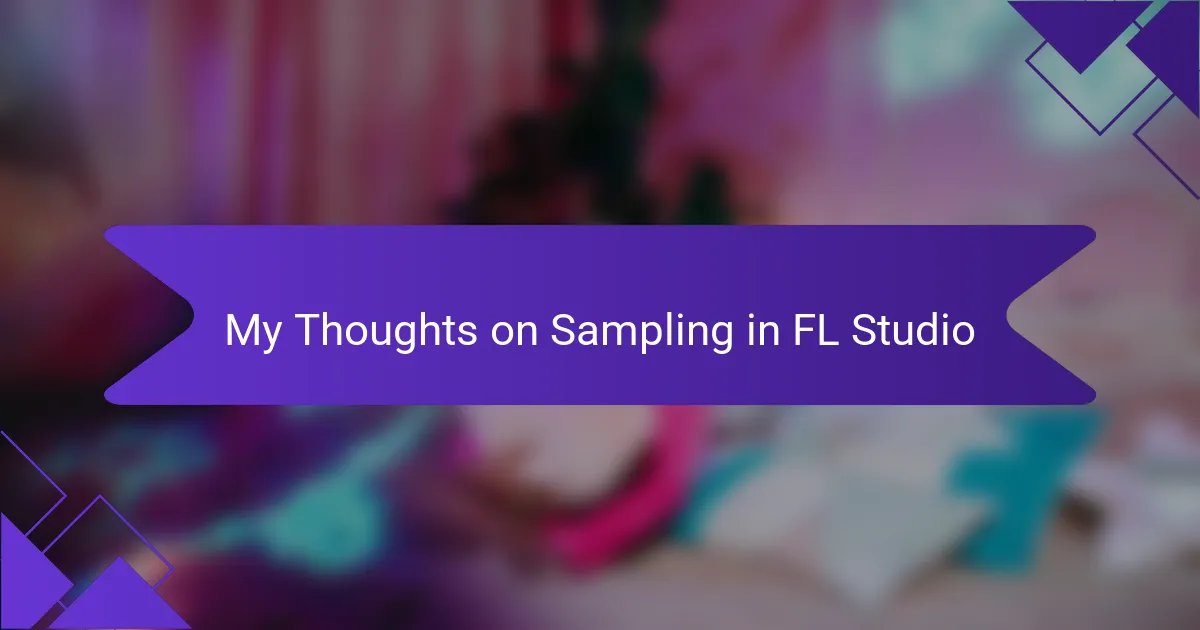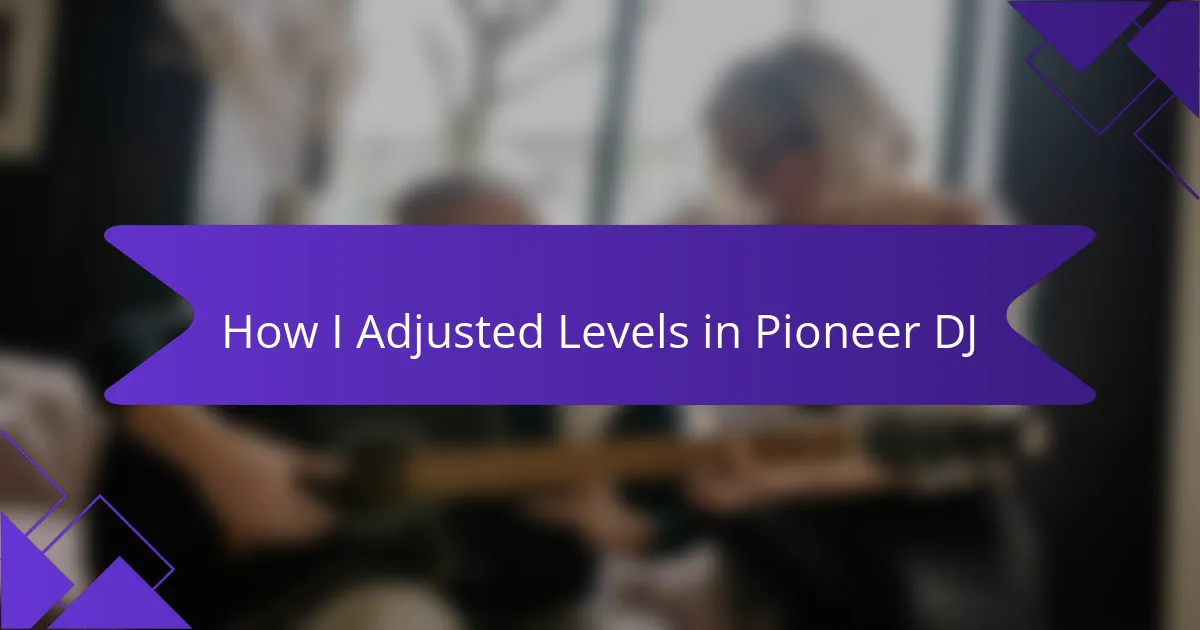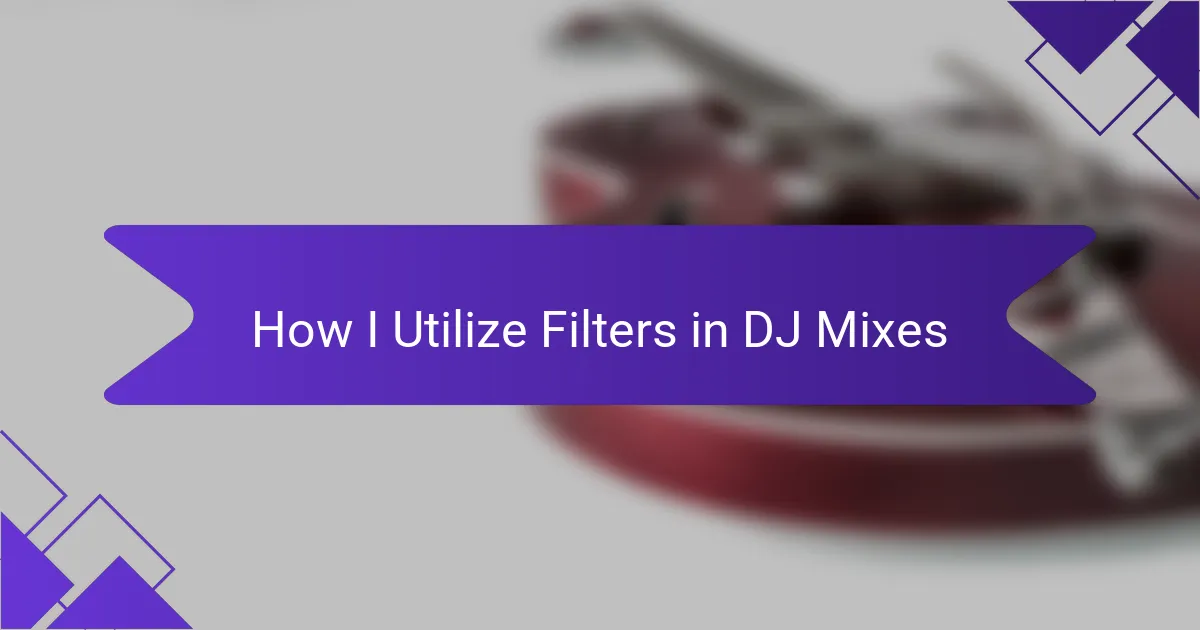Key takeaways
- Integrating live instruments enhances DJ performances, creating memorable experiences and emotional connections with the audience.
- Preparation and practice are essential for seamless integration of live musicians, ensuring they are in sync with the DJ’s beats.
- Choosing the right instruments based on the vibe of the set, and allowing room for spontaneity, can elevate the overall performance.
- Using DJ software effectively can significantly enhance the live performance experience by allowing real-time adjustments and collaboration.
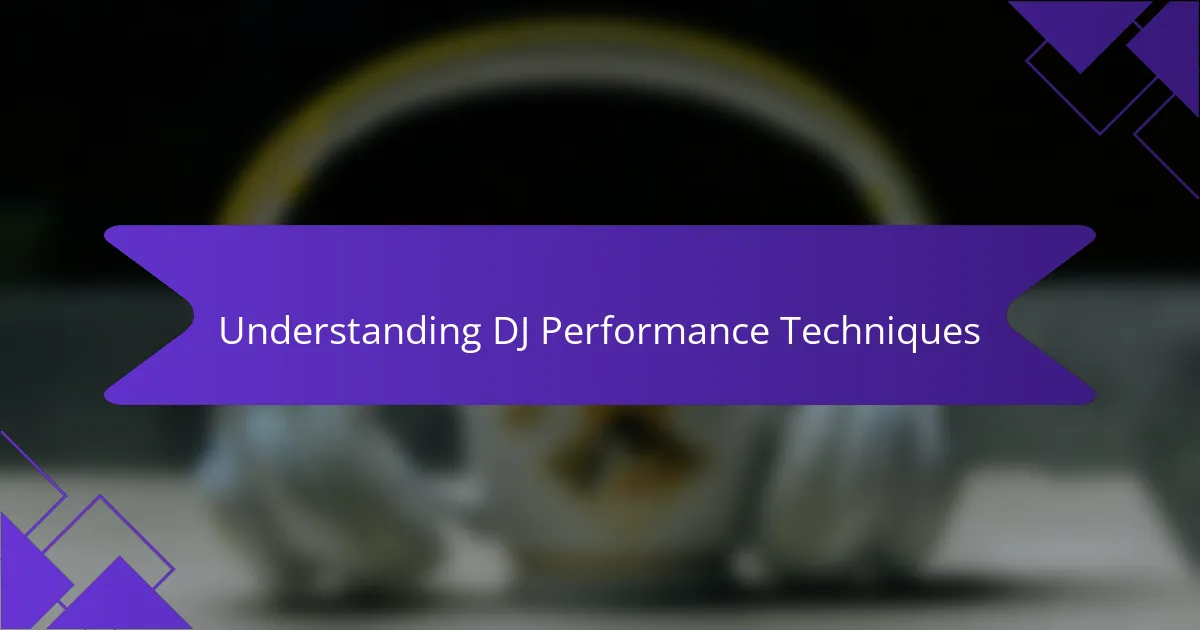
Understanding DJ Performance Techniques
Incorporating live instruments into my DJ sets transformed my performances and added an exhilarating layer of creativity. I remember the first time I brought a saxophonist on stage; the energy was electric, and the crowd’s reaction was just incredible. It felt as if the music had a heartbeat, and I realized that blending live elements with my mixes can create an unforgettable experience.
Understanding various DJ performance techniques is crucial for seamless integration of live instruments. Here are some strategies I’ve learned through trial and error:
- Layering Sounds: Building a solid foundation with your tracks before introducing live elements ensures everything meshes well.
- Timing and Syncing: Make sure the live musician is in sync with your beats to maintain the flow of the set; practice is essential.
- Building Dynamics: Use volume and intensity to control when to bring in live instruments, like swelling into a climactic moment for maximum impact.
- Audience Interaction: Engage with your crowd; seeing them respond positively adds to the overall energy and can inspire spontaneity during performances.
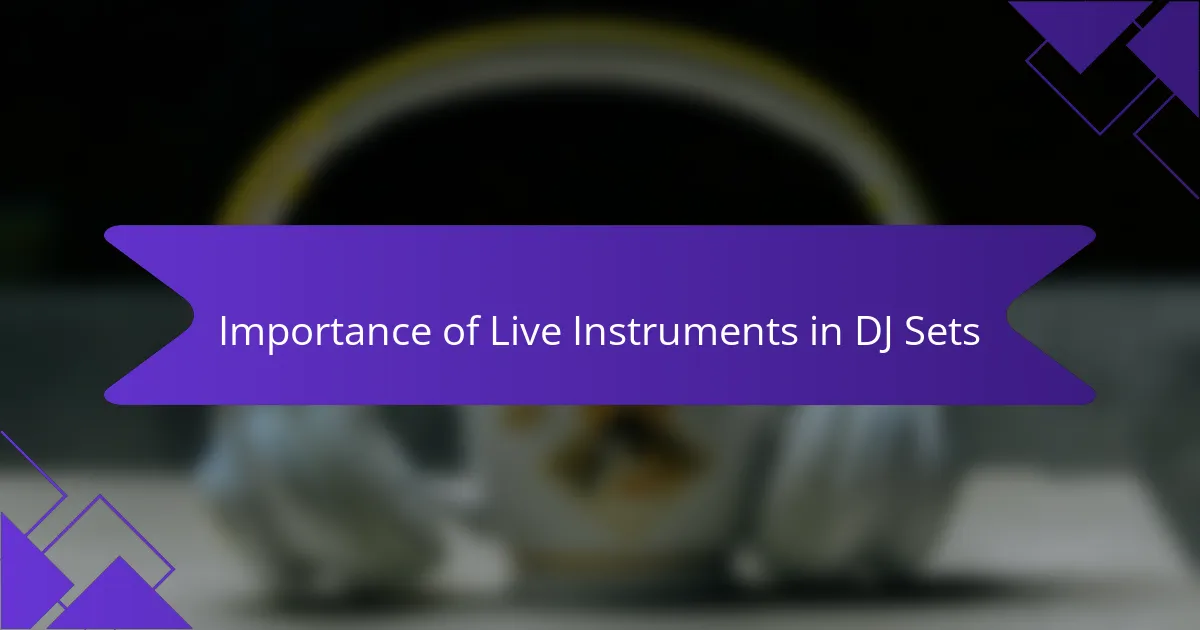
Importance of Live Instruments in DJ Sets
In my journey as a DJ, I’ve found that integrating live instruments into my sets adds an electrifying layer of depth that purely digital performances can sometimes lack. One memorable night, I brought a saxophonist on stage, and the energy shifted instantly; the crowd connected with the music in a way that had a palpable, almost magical quality. That spontaneous blend of live sound and electronic beats created an unforgettable experience, and I realized that live instruments can transform a good set into something truly extraordinary.
Incorporating live instruments in DJ performances not only enhances the overall sound but also builds a dynamic atmosphere that encourages audience interaction. This fusion invites spontaneity, and from my experience, it often leads to moments of pure joy, where the crowd feels like they are part of the music. Here are some key reasons why live instruments hold significant importance in DJ sets:
- Enhanced Emotional Connection: Live instruments evoke real emotions, forging a deeper bond between the performer and the audience.
- Unique Sound: They provide a distinctive twist that sets a performance apart, creating memorable moments.
- Spontaneity: The unpredictability of live playing can lead to unique and surprising musical elements, keeping the audience on their toes.
- Visual Engagement: Musicians on stage add a visual aspect to the performance, captivating the audience beyond just the audio experience.
- Collaborative Spirit: It opens opportunities for collaboration, allowing for creative synergy that brings out the best in both DJs and instrumentalists.
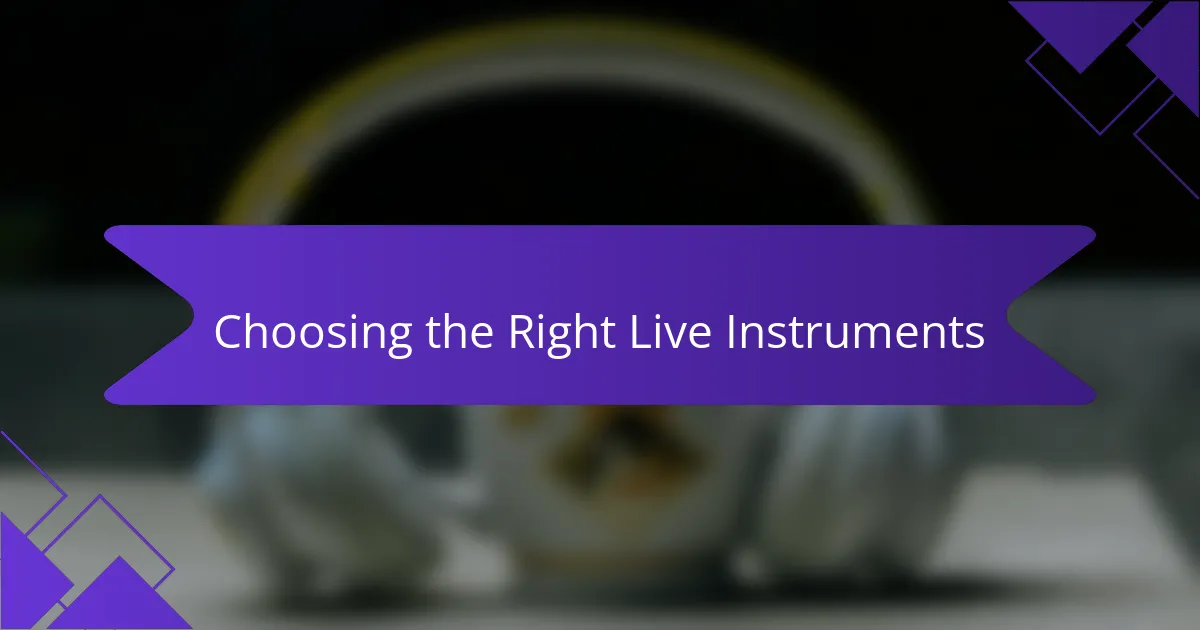
Choosing the Right Live Instruments
When it comes to choosing the right live instruments, I always start by considering the vibe of my set. For instance, a saxophonist can infuse a sensual energy into a chill house set, while percussionists might ramp up the excitement in a high-energy electronic mix. Think about what instruments resonate with your style and how they can enhance your overall sound.
I recall a time when I decided to collaborate with a violinist during a sunset event. The haunting melodies paired beautifully with the ambient beats, creating a moment that felt almost ethereal. The right choice of instruments can not only elevate your music but also deepen the emotional connection with your audience. What instruments do you feel drawn to, and how could they reshape your sets?
It’s essential to consider not just the sound but also the personality of the musician you choose. I’ve learned that a skilled player who can interact with the crowd makes a significant difference. Their energy can amplify the atmosphere and invite more engagement from the audience. Ultimately, selecting the right live instruments boils down to both musical compatibility and the chemistry you create together on stage.
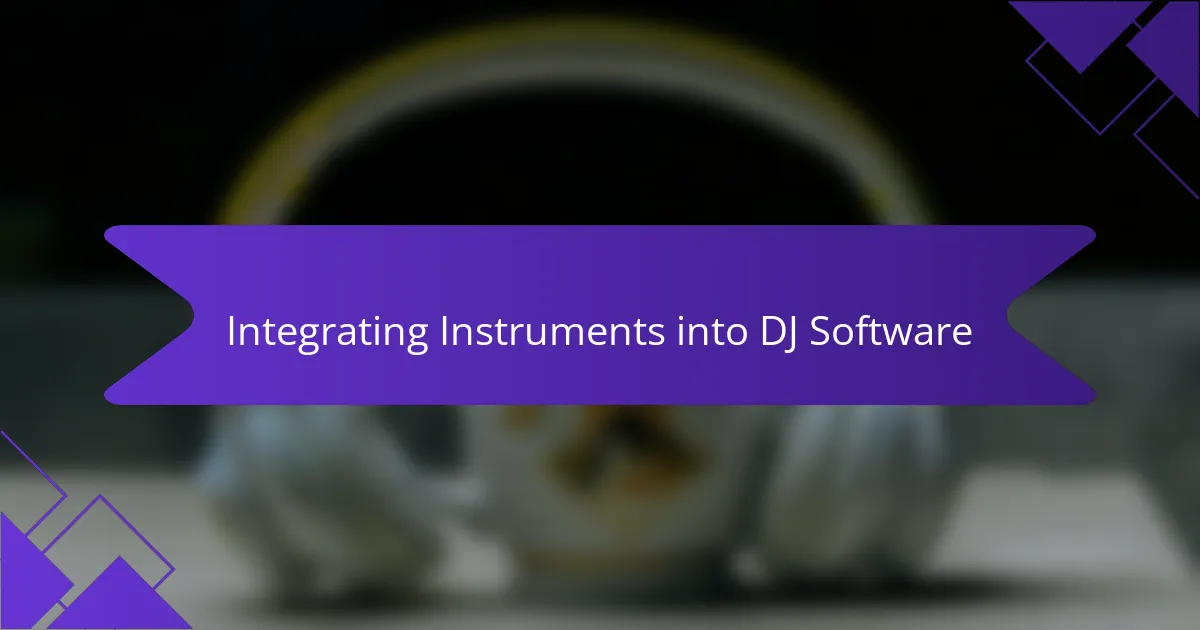
Integrating Instruments into DJ Software
In integrating live instruments into DJ software, I’ve discovered a few key techniques that can significantly enhance the live performance experience. For me, using a digital audio workstation (DAW) has been a game-changer—allowing me to layer sounds and sync live instruments effortlessly. I remember the first time I used MIDI controllers to connect a keyboardist to my setup; the seamless communication between our instruments made the performance feel truly cohesive.
Timing plays a crucial role when you’re combining live elements with pre-recorded tracks. I’ve learned that practicing together can build a sense of unity between the DJ and the live musician, which translates to a better experience for the audience. There’s something magical about the moment when the live sound drops in perfectly with the beat. Have you experienced that rush? For me, it’s a reminder of how technology can bridge the gap between digital and live performances.
Exploring different software options is also vital. I’ve experimented with various programs like Ableton Live and Serato, each offering unique features for integrating instruments. These platforms often allow for real-time adjustments, enabling me to react to the crowd’s energy. It’s thrilling to think about how the right tools can elevate a performance from ordinary to extraordinary—don’t you agree?
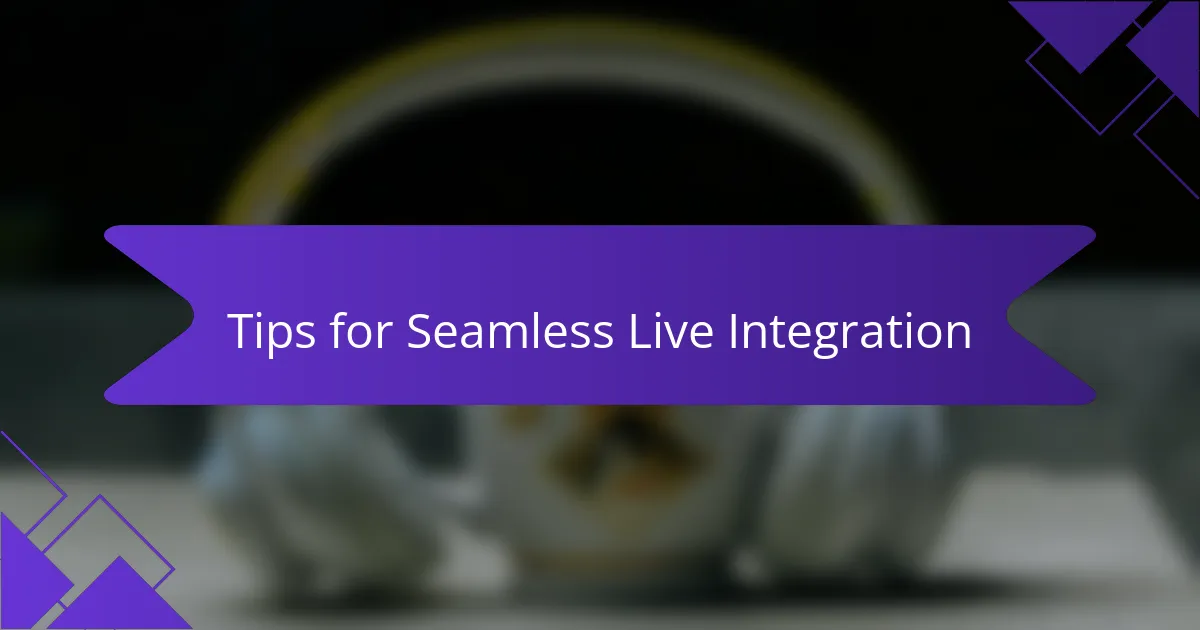
Tips for Seamless Live Integration
When it comes to integrating live instruments into DJ sets, preparation is key. I remember the first time I tried to blend a saxophonist into my performance. I was nervous, but as soon as the sax dropped in with the beat, it created an electric atmosphere that elevated the entire experience. Ensuring everyone knows their cues and practicing transitions makes a world of difference.
Another critical tip is to choose instruments that complement your sound. For instance, using a live violinist can enhance melodic tracks beautifully. I’ve found that incorporating instruments that resonate with your style not only enriches the music but also connects you with the audience on a deeper level.
Lastly, don’t forget to allow for spontaneity. Sometimes the magic happens when things don’t go exactly as planned. There’s something exhilarating about improvising with musicians on stage, and that unpredictability can create unforgettable moments for both you and your audience.
| Tip | Description |
|---|---|
| Preparation | Practice transitions and ensure everyone understands their cues. |
| Instrument Selection | Choose instruments that enhance your unique sound and vibe. |
| Embrace Spontaneity | Allow room for improvisation to create magical moments on stage. |
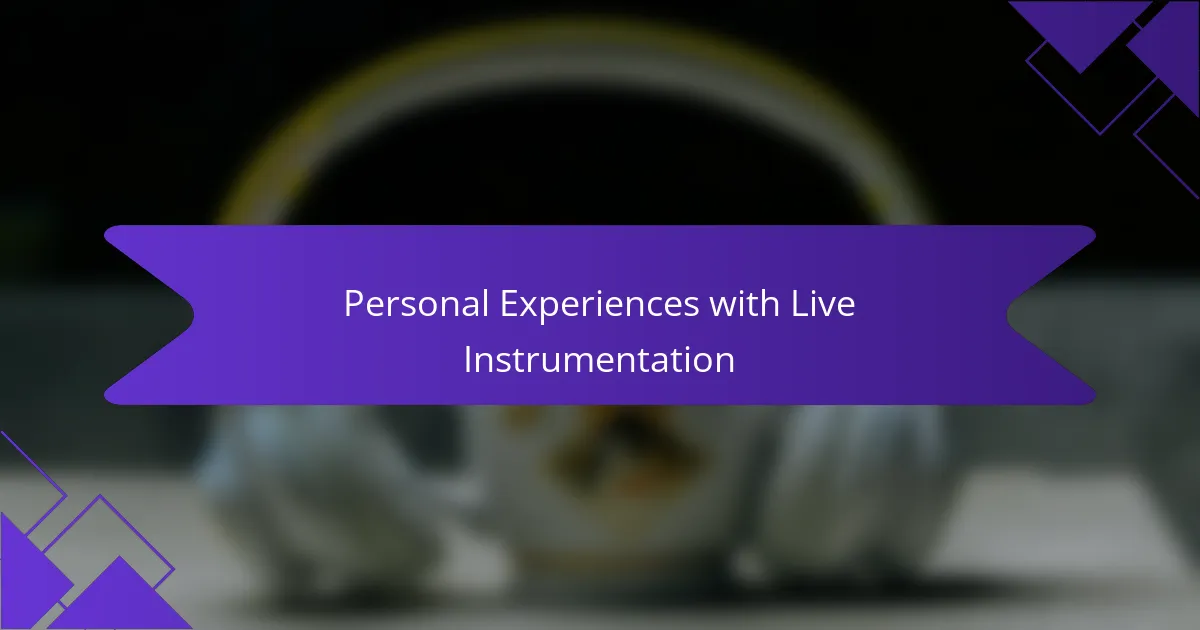
Personal Experiences with Live Instrumentation
When I first decided to integrate live instruments into my DJ sets, I was both excited and nervous. I vividly remember my first attempt: I brought a saxophonist on stage. The moment he played his first note over my mix, the energy in the room surged. It was this inexplicable connection between the tracks and the live sound that sent chills down my spine, and from that moment, I was hooked on blending these two worlds.
Incorporating live instrumentation has transformed not just my performances but also my relationship with music. I’ve seen audience reactions become more dynamic, almost as if the experience is tailored in real-time. Each performance brings its own unique flavor, thanks to the improvisational aspect of live instruments. Here are some specific elements I’ve enjoyed integrating:
- Collaborating with musicians to create exclusive tracks.
- Experimenting with different instruments like violins, percussion, and saxophones.
- Enhancing specific tracks by adding live solos or rhythms on-the-fly.
- Creating a more immersive atmosphere that invites audience participation.
- Fostering a sense of spontaneity and excitement at each performance.
